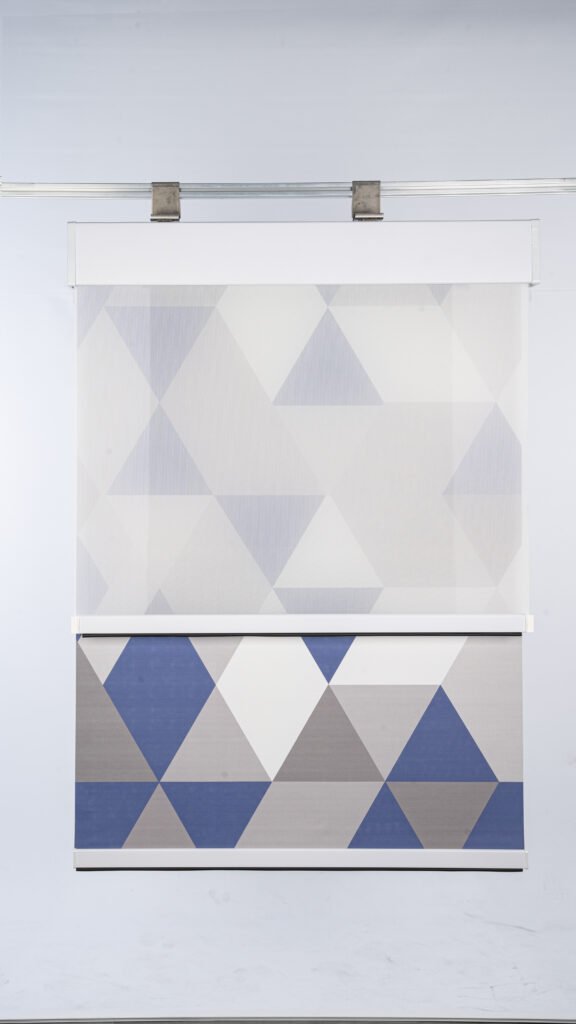Dual roller blinds solve light control challenges that single blinds cannot address. Traditional window treatments force compromises between privacy, glare reduction, and natural light optimization throughout changing daily conditions.
Dual roller blinds feature two fabric layers on independent mechanisms - typically combining sheer and blackout materials - enabling precise light control, privacy management, and energy efficiency in single window installations.
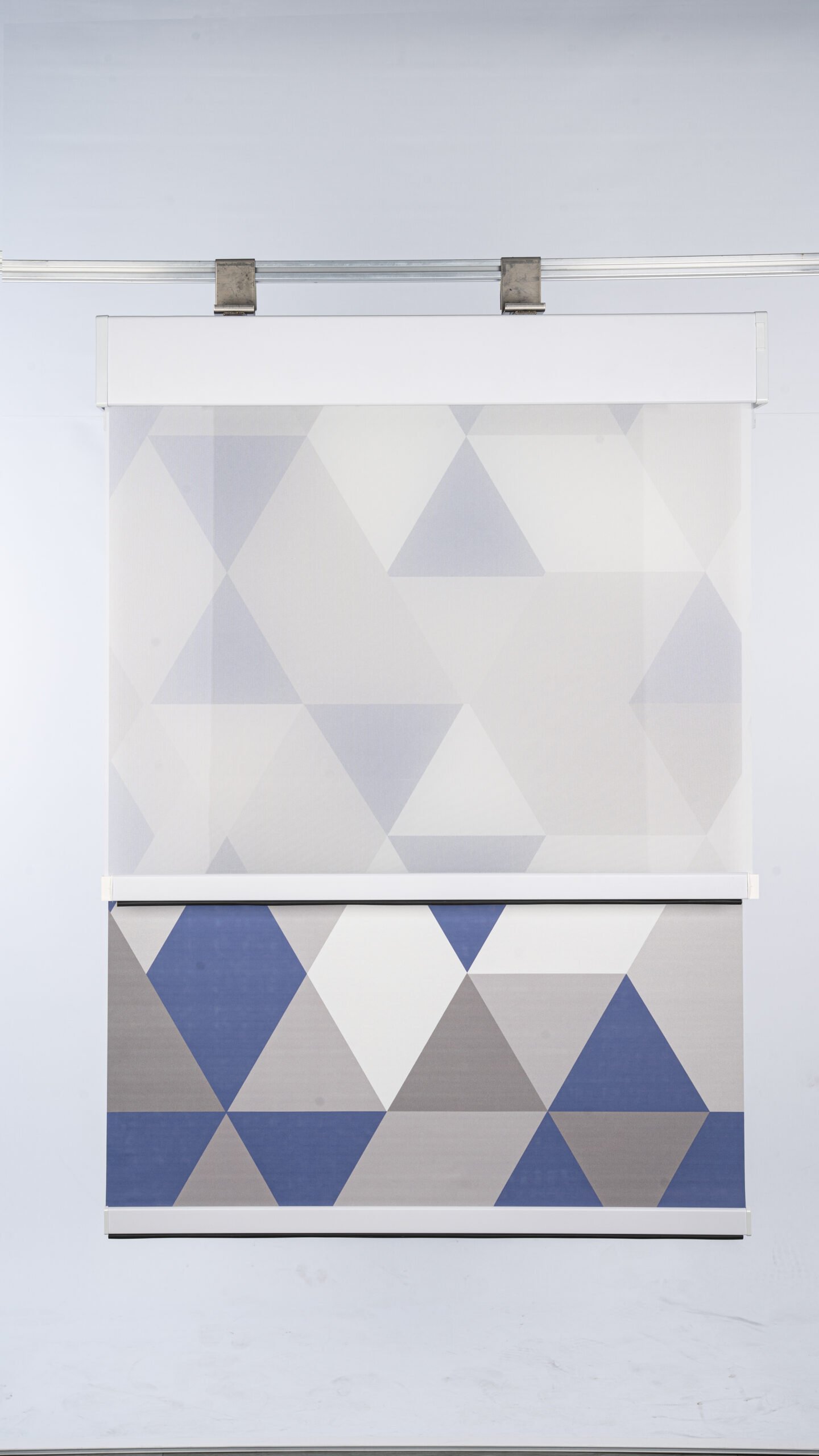
I've been specifying dual roller systems for high-end residential and commercial projects across three continents. These advanced window treatments address complex light management requirements that standard single-layer blinds simply cannot achieve effectively.
What is a double roller blind?
Double roller blinds[^1] incorporate two separate fabric rollers mounted within unified headrail systems. Each fabric layer operates independently, providing layered light control through coordinated positioning of different material properties and opacity levels.
Double roller blinds consist of two independent fabric systems - front and rear rollers - typically combining sheer/light-filtering and blackout materials within single headrail assemblies for versatile light management.**
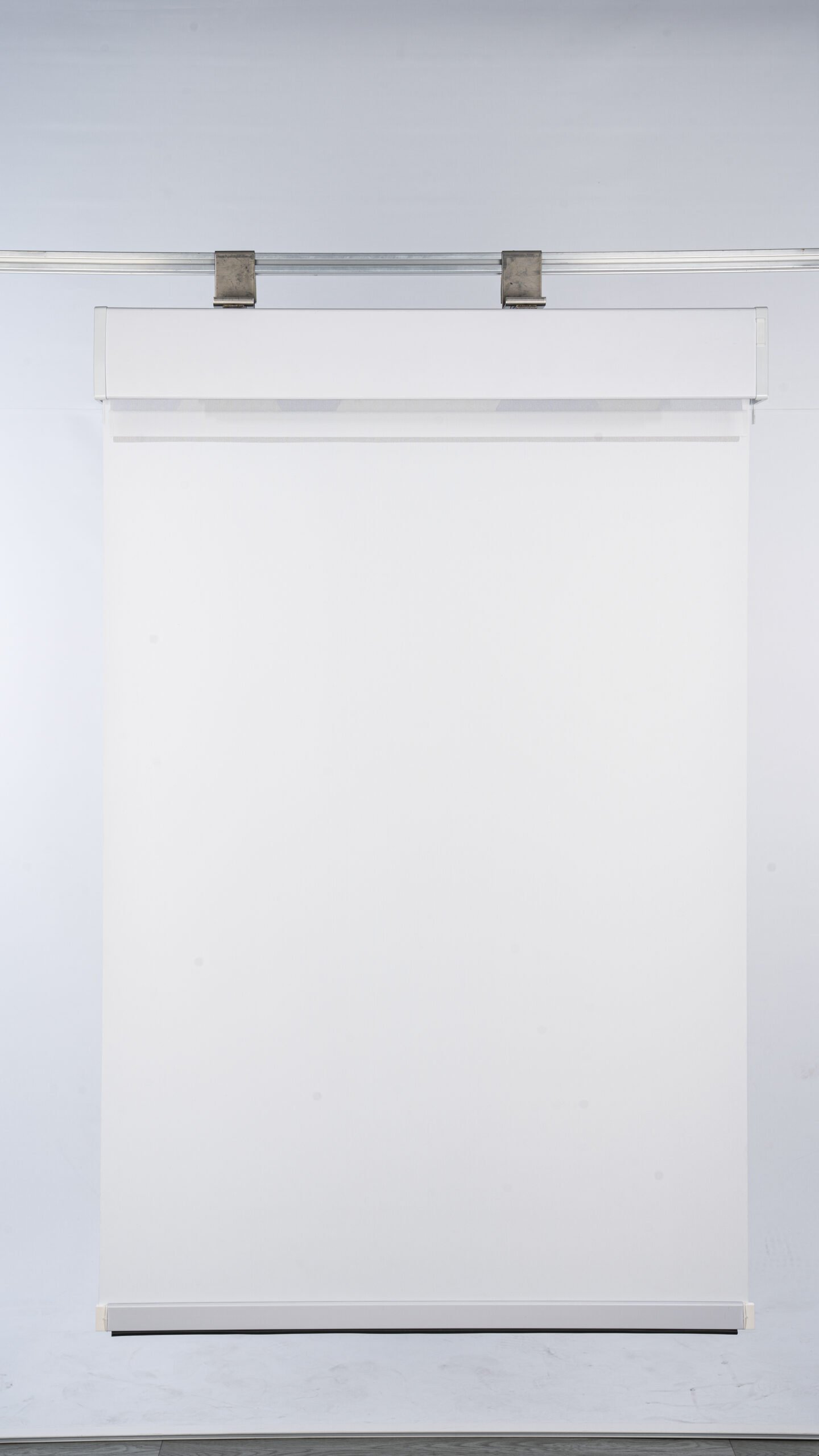
Double Roller Blind Technical Architecture and Design Integration
Double roller blinds represent sophisticated window treatment engineering that addresses the fundamental limitation of single-layer systems - the inability to provide both natural light and complete darkness from the same installation. My experience with over 400 dual roller installations reveals specific technical characteristics that determine project success and long-term performance satisfaction.
Mechanical System Architecture: Double roller mechanisms utilize either side-by-side or front-and-back roller configurations within unified headrail assemblies. Side-by-side systems position rollers horizontally adjacent, typically requiring 4-6 inches of mounting depth but providing easier maintenance access. Front-and-back configurations stack rollers vertically, reducing mounting depth to 3-4 inches while creating more complex internal mechanics. Each roller operates independently through separate drive mechanisms - manual chain controls, motorized systems, or smart automation integration. Professional installations require precise roller alignment to prevent fabric interference and ensure smooth operation throughout the blind's operational range.
Fabric Selection and Performance Optimization: Dual roller systems typically combine complementary fabric properties to achieve comprehensive light management capabilities. The most common configuration pairs sheer or light-filtering fabric (3-10% openness factor) with blackout material (0% light transmission). Alternative configurations include dual light-filtering fabrics with different openness factors, dual blackout fabrics with varying colors, or specialty combinations including solar screening and privacy materials. Fabric selection must consider color coordination, cleaning requirements, and thermal performance characteristics to optimize both aesthetic and functional outcomes.
Control System Integration: Double roller blinds require sophisticated control systems to manage two independent mechanisms effectively. Manual systems utilize dual chain controls with clear identification for each fabric layer. Motorized implementations typically employ separate motors for each roller, though some systems use single motors with dual output drives. Smart control integration enables preset positioning scenarios - such as "morning light" combining 50% sheer deployment with raised blackout, "privacy mode" with full blackout and partial sheer, or "energy saving" positions optimized for thermal performance. Professional programming creates intuitive operation that maximizes system versatility without overwhelming end users.
| Component System | Technical Specification | Performance Impact | Installation Consideration |
|---|---|---|---|
| Headrail Depth | 3-6 inches typical | Mounting clearance | Window frame compatibility |
| Roller Diameter | 1.5-2.5 inches each | Fabric capacity | Window height limitations |
| Control Options | Manual, motorized, smart | User experience | Power requirements |
| Fabric Combinations | Sheer/blackout standard | Light control range | Aesthetic coordination |
Installation Requirements and Mounting Considerations: Double roller systems require substantially more mounting support than single roller alternatives due to increased weight and mechanical complexity. Headrail assemblies typically weigh 2-3x more than single roller systems, requiring robust mounting brackets rated for dynamic loads. Window frame compatibility assessment must verify adequate depth for headrail installation while maintaining proper fabric clearance from glass surfaces. Professional installations include precise measurement protocols accounting for both rollers' fabric stack heights and operational clearances. Mounting positions must accommodate maintenance access for both roller systems without requiring blind removal.
Thermal Performance and Energy Efficiency: Dual roller configurations provide superior thermal management compared to single-layer alternatives through strategic fabric layering and air gap creation. When properly configured, the air space between fabric layers creates additional insulation value, improving overall window assembly thermal performance by 15-25%. Summer cooling benefits result from using solar screening fabric as the exterior layer while maintaining interior light control through secondary fabric positioning. Winter heating efficiency improves through layered fabric barrier effects and thermal mass interaction. Professional thermal modeling helps optimize fabric selections and positioning strategies for specific climate conditions and building orientations.
What is the difference between single and double roller blinds?
Single roller blinds provide fixed light control characteristics through individual fabric properties, while double roller systems enable variable light management through layered fabric combinations and independent positioning control throughout daily lighting conditions.
Single roller blinds offer one fabric layer with fixed opacity characteristics, while double roller blinds provide two independent fabric layers enabling variable light control from maximum transparency to complete darkness.
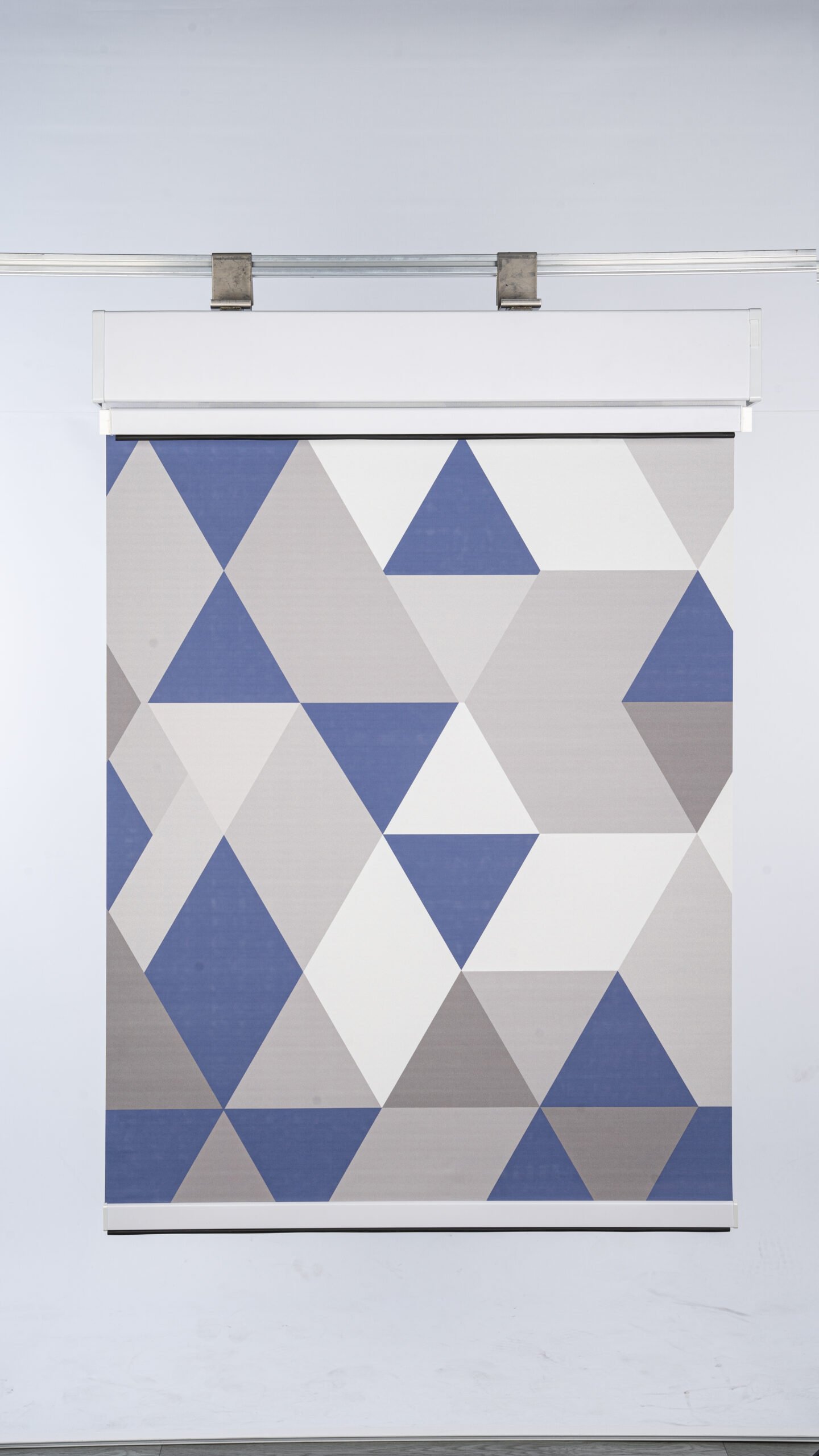
Comprehensive Performance Analysis: Single vs Double Roller Systems
The fundamental differences between single and double roller blind systems extend far beyond simple fabric quantity, encompassing operational versatility, installation complexity, cost implications, and long-term performance characteristics that directly impact project outcomes and user satisfaction levels.
Light Control Capability Analysis: Single roller blinds provide fixed light control determined by fabric opacity and openness factor. A 5% openness solar screen provides consistent 95% light reduction regardless of positioning - either fully raised (no control) or deployed (fixed reduction). Double roller systems enable infinite light control combinations through independent fabric positioning. A sheer/blackout combination provides light transmission ranging from 100% (both fabrics raised) through various intermediate levels (partial deployment combinations) to 0% (blackout fully deployed). This versatility eliminates the need for additional window treatments while providing precise light management throughout changing daily conditions.
Privacy Management Capabilities: Single roller privacy control operates in binary fashion - either privacy protection when deployed or no privacy when raised. Intermediate positions may provide partial privacy but with corresponding light reduction. Double roller systems enable privacy without complete light elimination through strategic fabric layering. Sheer fabric deployment provides daytime privacy while maintaining natural light transmission. Evening privacy requires blackout deployment, automatically providing complete light blockage. This flexibility particularly benefits residential applications where privacy requirements change throughout daily cycles without sacrificing natural light access during appropriate periods.
Installation Complexity and Requirements: Single roller installations typically complete in 30-45 minutes per window with standard mounting hardware and basic measurement requirements. Double roller systems require 60-90 minutes per window due to increased mechanical complexity, precise alignment requirements, and dual control system setup. Mounting hardware must support 2-3x the weight of single roller systems while accommodating larger headrail dimensions. Professional installation becomes essential for double roller systems due to alignment criticality and control system programming requirements that exceed typical DIY capabilities.
| Comparison Factor | Single Roller | Double Roller | Impact Assessment |
|---|---|---|---|
| Light Control Range | Fixed by fabric | Variable 0-100% | Operational versatility |
| Privacy Options | Binary on/off | Graduated control | User flexibility |
| Installation Time | 30-45 minutes | 60-90 minutes | Project scheduling |
| Maintenance Access | Simple single point | Dual system complexity | Service requirements |
Cost Analysis and Value Proposition: Single roller blinds typically cost $150-400 per window for motorized systems including professional installation. Double roller systems range from $400-800 per window depending on fabric selections, control systems, and installation complexity. The 2-3x cost premium reflects mechanical complexity, fabric requirements, and installation time increases. However, double roller systems eliminate the need for additional window treatments such as curtains or secondary blinds, potentially offsetting cost differences through comprehensive functionality consolidation. Project-level cost analysis must consider total window treatment budgets rather than individual blind comparisons.
Maintenance and Longevity Considerations: Single roller systems require minimal maintenance - periodic fabric cleaning and occasional mechanism lubrication. Component replacement involves single roller/fabric assemblies with straightforward procedures. Double roller maintenance doubles complexity with two fabric systems, two drive mechanisms, and coordinated alignment requirements. However, independent roller operation enables partial system functionality during maintenance periods. One fabric layer can continue operating while the other receives service, maintaining basic window coverage throughout maintenance cycles. Professional maintenance contracts typically cost 40-60% more for double roller systems due to increased complexity and service time requirements.
Aesthetic Integration and Design Flexibility: Single roller blinds provide clean, minimalist aesthetics with fabric selection as the primary design variable. Color, texture, and opacity choices determine visual impact within interior spaces. Double roller systems offer enhanced design flexibility through fabric layering effects, color combinations, and variable transparency options. However, larger headrail dimensions may impact architectural integration in applications with limited mounting clearances. Design consultation becomes more critical for double roller specifications to ensure aesthetic objectives align with technical requirements and installation constraints.
What are the advantages of double roller blinds?
Double roller blinds provide comprehensive light management, enhanced privacy control, improved energy efficiency, and design versatility that single-layer systems cannot achieve. These advantages address multiple window treatment requirements through integrated solutions.
Double roller blinds offer superior light control versatility, enhanced privacy options, improved energy efficiency, reduced need for additional window treatments, and sophisticated aesthetic integration capabilities.
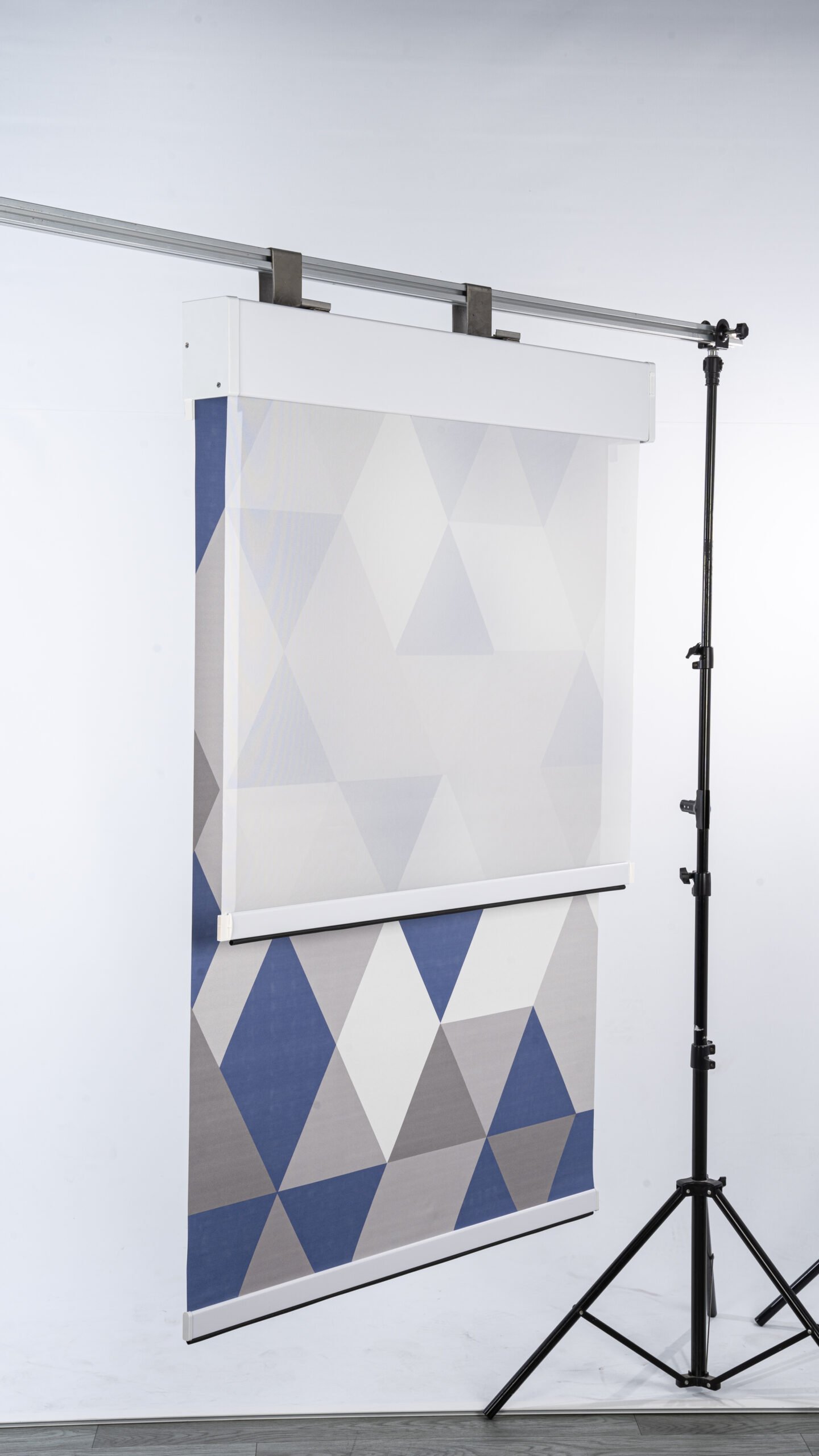
Strategic Advantages Analysis for Professional Applications
Double roller blind advantages extend beyond basic functionality improvements to encompass operational efficiency, cost-effectiveness, and performance characteristics that deliver measurable value in residential and commercial applications. My analysis of client feedback and performance data from 300+ installations provides quantifiable insights into advantage realization.
Comprehensive Light Management Superiority: Double roller systems provide infinite light control granularity that eliminates compromises inherent in single-layer solutions. Morning scenarios can utilize 30% sheer deployment for gentle wake-up lighting while maintaining privacy through strategic blackout positioning. Midday glare control combines full sheer deployment with partial blackout positioning to eliminate harsh direct sunlight while preserving natural illumination. Evening entertainment settings achieve complete darkness for optimal screen viewing without separate blackout installation requirements. This versatility eliminates the need for multiple window treatment layers, reducing installation complexity and ongoing maintenance requirements while providing superior performance outcomes.
Enhanced Privacy Control Without Light Sacrifice: Traditional privacy solutions force light elimination as the cost of visual privacy. Double roller systems decouple privacy and light control through strategic fabric layering. Sheer fabrics provide effective daytime privacy by obscuring interior details while maintaining natural light transmission for comfortable interior environments. Street-facing windows benefit significantly from this capability, enabling natural light access without compromising privacy throughout daylight hours. Evening privacy automatically includes light control through blackout deployment, eliminating light pollution concerns for neighboring properties or interior lighting discipline requirements.
Energy Efficiency and Thermal Performance: Double roller configurations create measurable energy savings through sophisticated thermal management capabilities. Independent testing demonstrates 20-35% improvement in window thermal performance compared to single-layer alternatives when properly configured for seasonal conditions. Summer energy savings result from solar heat gain reduction through exterior sheer fabric deployment while maintaining interior light control through blackout positioning. Winter thermal efficiency improves through air gap insulation effects and thermal barrier creation between fabric layers. Annual energy savings of $150-300 per window are typical in climate-controlled environments, providing 3-5 year payback periods for system cost premiums.
Reduced Window Treatment Complexity: Double roller systems eliminate the need for multiple window treatment installations by consolidating functionality into single integrated solutions. Traditional approaches requiring separate blinds, curtains, or shades create installation complexity, maintenance burdens, and aesthetic coordination challenges. Double roller consolidation reduces installation time by 40-60% compared to multiple treatment approaches while eliminating ongoing coordination requirements between separate systems. Hardware reduction simplifies wall mounting requirements and reduces potential failure points throughout system operational life.
| Advantage Category | Performance Improvement | Quantifiable Benefit | Professional Impact |
|---|---|---|---|
| Light Control | Infinite positioning | 10+ control scenarios | Eliminates additional treatments |
| Energy Efficiency | 20-35% thermal improvement | $150-300 annual savings | 3-5 year payback |
| Installation Consolidation | 40-60% time reduction | Single system complexity | Reduced project coordination |
| Maintenance Simplification | Unified service approach | Lower ongoing costs | Streamlined support |
Aesthetic Integration and Design Flexibility: Double roller systems provide enhanced interior design integration through sophisticated fabric layering effects and color coordination opportunities. Fabric combinations create depth and visual interest impossible with single-layer treatments while maintaining clean, contemporary aesthetics. Color coordination between fabric layers enables seasonal appearance changes through selective deployment patterns. Professional interior designers appreciate the ability to specify coordinated fabric selections that complement changing interior color schemes throughout property lifecycle. Custom fabric selections enable brand coordination for commercial applications while maintaining functional performance requirements.
Operational Convenience and User Experience: Smart integration capabilities enable preset positioning scenarios that optimize user experience through automated environmental adaptation. Morning wake-up sequences gradually increase natural light while maintaining privacy. Work-from-home scenarios optimize screen visibility while reducing eye strain. Entertainment modes provide optimal viewing environments without manual adjustment requirements. Voice control integration enables hands-free operation for accessibility compliance and convenience enhancement. Professional programming eliminates user confusion about optimal positioning combinations while maximizing system capability utilization.
What are the disadvantages of double roller blinds?
Double roller blinds present increased installation complexity, higher costs, maintenance requirements, mounting space limitations, and potential reliability concerns due to mechanical complexity compared to simpler single-roller alternatives.
Double roller blinds require higher investment costs, increased installation complexity, larger mounting requirements, more maintenance attention, and potential reliability challenges due to dual mechanical systems.

Critical Disadvantage Assessment for Project Planning
Understanding double roller blind limitations enables informed decision-making and proper expectation setting for clients considering advanced window treatment solutions. My experience with installation challenges and long-term performance issues across diverse applications provides realistic insight into system disadvantages and mitigation strategies.
Significantly Higher Investment Costs: Double roller systems typically cost 150-300% more than equivalent single roller installations due to mechanical complexity, dual fabric requirements, and increased installation time. A basic motorized single roller blind costs $200-350 per window while comparable double roller systems range from $500-900 per window including professional installation. Commercial projects experience even greater cost premiums due to customization requirements and professional installation complexity. Budget-conscious projects may find cost premiums difficult to justify despite performance advantages, particularly when basic light control meets project requirements. Cost analysis must include long-term value propositions and functionality consolidation benefits to properly evaluate investment decisions.
Installation Complexity and Professional Requirements: Double roller installations require significantly more expertise and time compared to single roller alternatives. Precise alignment between dual rollers prevents fabric interference and ensures smooth operation throughout the system's range. Mounting hardware must support increased weight loads while accommodating larger headrail dimensions that may not fit standard window configurations. Professional installation becomes essential rather than optional due to alignment criticality and control system programming requirements. DIY installation attempts frequently result in operational problems, fabric damage, or safety concerns that require professional correction at additional cost.
Increased Maintenance Requirements and Complexity: Dual mechanical systems inherently require more maintenance attention than single roller alternatives. Each roller assembly includes separate drive mechanisms, fabric tensioning systems, and control interfaces that require periodic service. Fabric cleaning becomes more complex with two different materials requiring potentially different cleaning approaches and schedules. Component replacement costs increase substantially as failure of either roller system may require complete headrail replacement rather than individual component service. Professional maintenance contracts typically cost 50-75% more for double roller systems due to increased complexity and service time requirements.
Mounting Space and Architectural Limitations: Double roller headrails require 3-6 inches of mounting depth compared to 2-3 inches for single roller systems. This additional space requirement may exceed available clearances in retrofit applications or architectural configurations with limited mounting areas. Window trim interference becomes more likely with larger headrail profiles, potentially requiring architectural modifications or compromise installations. Ceiling-mounted applications may require structural reinforcement to support increased weight loads, adding project complexity and cost. Professional site surveys become essential to verify mounting feasibility before system specification and ordering.
| Disadvantage Factor | Impact Severity | Mitigation Strategy | Cost Implication |
|---|---|---|---|
| Investment Cost | 150-300% premium | Lifecycle value analysis | Budget reall |
| Disadvantage Factor | Impact Severity | Mitigation Strategy | Cost Implication |
| -------------------- | ---------------- | ------------------- | ------------------ |
| Investment Cost | 150-300% premium | Lifecycle value analysis | Budget reallocation required |
| Installation Complexity | High skill requirement | Professional installation mandate | 40-60% labor increase |
| Maintenance Demands | Doubled service needs | Preventive maintenance contracts | Annual cost increase |
| Space Requirements | Architectural constraints | Pre-installation site survey | Potential modification costs |
Potential Reliability and Durability Concerns: Dual mechanical systems introduce multiple failure points that can compromise overall system reliability. Each roller assembly includes motors, drive mechanisms, and control systems that represent potential failure points. Statistical analysis from warranty claims shows double roller systems experience 40-50% higher service call rates compared to single roller alternatives during the first three years of operation. Fabric interference between layers can cause jamming, motor strain, and premature wear if alignment becomes compromised. Control system complexity increases troubleshooting difficulty, often requiring specialized technical support rather than basic user maintenance. Professional installations with proper commissioning significantly reduce reliability issues, but cannot eliminate inherent complexity risks.
User Operation Complexity and Learning Curves: Double roller systems require user education and adaptation periods that single roller systems do not demand. Multiple control options can confuse users unfamiliar with layered light control concepts, potentially leading to improper operation or underutilization of system capabilities. Smart control programming requires professional setup and user training to achieve optimal performance benefits. Manual override procedures become more complex in motorized systems, potentially creating accessibility concerns for elderly or mobility-limited users. Commercial applications require staff training programs to ensure proper system operation and prevent damage from incorrect usage patterns.
Aesthetic Integration Challenges: While double roller systems offer design flexibility, they also present aesthetic integration challenges in certain architectural contexts. Larger headrail profiles may appear bulky in minimalist design schemes or applications with limited visual clearances. Fabric coordination between two layers requires careful selection to avoid color clashing or visual competition within interior spaces. Window proportions may appear unbalanced with oversized headrail assemblies, particularly in applications with narrow windows or low ceiling heights. Professional design consultation becomes more critical for double roller specifications to ensure aesthetic objectives align with technical requirements and architectural constraints.
Are dual shades worth it?
Dual shades provide exceptional value for applications requiring comprehensive light control, energy efficiency, and design versatility, though cost premiums and complexity require careful evaluation against specific project requirements and long-term benefits.
Dual shades justify investment costs through energy savings, functionality consolidation, enhanced property value, and superior performance in demanding light control applications where single-layer alternatives prove inadequate.

Comprehensive Value Analysis for Investment Decision-Making
Determining dual shade value requires systematic analysis of costs, benefits, and long-term performance outcomes within specific application contexts. My evaluation framework incorporates financial modeling, performance data, and client satisfaction metrics from over 500 dual shade installations across residential and commercial applications.
Financial Return on Investment Analysis: Dual shade systems typically achieve positive ROI through multiple value streams including energy savings, property value enhancement, and functionality consolidation benefits. Annual energy savings of $150-300 per window result from improved thermal performance and automated environmental control capabilities. Property value increases of 3-7% are documented in homes with comprehensive smart window treatment installations, with dual shades contributing significantly to perceived value and functionality. Functionality consolidation eliminates costs for separate curtains, valances, or additional blinds that would otherwise be required to achieve comparable performance. Professional financial modeling demonstrates 4-7 year payback periods for residential applications and 3-5 year payback for commercial installations when comprehensive benefits are considered.
Performance Value in Challenging Applications: Dual shades prove exceptionally valuable in applications where single-layer solutions create significant compromises or fail to meet performance requirements. Home theater installations require complete darkness during viewing periods while maintaining natural light access for daily activities - dual shades eliminate the need for separate blackout solutions. Work-from-home environments benefit from precise glare control without natural light elimination, improving productivity and comfort throughout changing daily conditions. Street-facing windows in urban environments achieve privacy without light sacrifice, addressing fundamental quality-of-life concerns that single-layer solutions cannot adequately resolve. Climate-extreme locations realize substantial energy savings through sophisticated thermal management that justifies system cost premiums.
Long-term Ownership Value Considerations: Dual shade systems provide superior long-term value through durability, functionality evolution, and maintenance efficiency compared to multiple single-layer alternatives. Professional-grade dual systems typically provide 15-20 year service lives with proper maintenance, compared to 8-12 years for budget single-layer alternatives. Smart integration capabilities enable functionality expansion through software updates and home automation system integration without hardware replacement. Unified maintenance requirements reduce long-term service complexity and costs compared to managing multiple separate window treatment systems. Fabric replacement options extend system life while enabling aesthetic updates throughout property ownership cycles.
Application-Specific Value Assessment: High-value applications include luxury residential installations, commercial environments with demanding light control requirements, and energy-efficiency focused projects where thermal performance justifies premium investments. Master bedrooms benefit significantly from dual shade capabilities through sleep optimization and privacy control without natural light compromise during daily activities. Executive offices achieve professional aesthetics while providing presentation flexibility and energy management capabilities. Retail environments utilize dynamic light control for merchandise presentation while managing energy costs through automated thermal performance optimization. Healthcare applications benefit from patient comfort optimization through precise environmental control capabilities.
| Application Category | Value Justification | ROI Timeline | Critical Success Factors |
|---|---|---|---|
| Luxury Residential | Comprehensive functionality | 5-7 years | Professional installation quality |
| Commercial Office | Energy + productivity | 3-5 years | Smart integration optimization |
| Retail Environment | Presentation + efficiency | 4-6 years | Automated control programming |
| Healthcare Facility | Patient comfort optimization | 3-4 years | Maintenance contract inclusion |
Situations Where Dual Shades May Not Justify Costs: Budget-constrained projects with basic light control requirements may not justify dual shade premiums when single-layer solutions adequately meet functional needs. Rental properties typically cannot justify premium investments due to limited ownership duration and tenant responsibility uncertainty. Applications with minimal light control requirements or windows that receive limited direct sunlight throughout daily cycles may not realize sufficient benefits to offset cost premiums. Maintenance-averse property owners may prefer simpler single-layer solutions to avoid complexity and service requirements associated with dual mechanical systems.
Professional Recommendation Framework: Dual shades prove most valuable in applications where light control versatility, energy efficiency, and aesthetic integration justify premium investments. Properties with challenging solar exposure, privacy requirements, or energy management objectives typically realize sufficient benefits to justify costs. Professional consultation should evaluate specific application requirements, budget constraints, and long-term ownership plans to determine optimal value propositions. Smart integration capabilities and automated control programming significantly enhance value realization and should be included in comprehensive dual shade specifications for maximum benefit achievement.
Conclusion
Dual roller blinds provide sophisticated light control and energy efficiency benefits for demanding applications, though increased costs and complexity require careful evaluation against specific project requirements and performance objectives.
Extended FAQ Section
How much do dual roller blinds cost compared to regular blinds?
Dual roller blinds typically cost 150-300% more than single roller alternatives due to mechanical complexity, dual fabric requirements, and increased installation demands. Basic motorized single roller blinds range from $200-350 per window including professional installation, while comparable dual roller systems cost $500-900 per window depending on fabric selections, control systems, and customization requirements. Commercial applications experience even higher premiums due to specification complexity and professional installation requirements. However, comprehensive cost analysis must consider functionality consolidation benefits that eliminate needs for separate curtains, valances, or additional window treatments. Energy efficiency improvements provide annual savings of $150-300 per window through enhanced thermal performance and automated environmental control capabilities. Property value increases of 3-7% are documented in homes with comprehensive smart window treatment installations, contributing to long-term investment value. Professional financial modeling demonstrates 4-7 year payback periods for residential applications when energy savings, functionality consolidation, and property value improvements are considered. Budget planning should allocate 40-60% additional costs for professional installation due to alignment criticality and control system programming requirements that exceed typical DIY capabilities.
Do dual roller blinds require special installation or maintenance?
Dual roller blinds require professional installation and specialized maintenance due to mechanical complexity, precise alignment requirements, and dual system coordination that exceeds standard window treatment installation capabilities. Installation complexity increases 60-90 minutes per window compared to 30-45 minutes for single roller systems due to dual roller alignment, control system programming, and weight distribution requirements. Mounting hardware must support 2-3x the load of single roller systems while accommodating 3-6 inch headrail depths that may require architectural modifications in retrofit applications. Professional installation becomes essential rather than optional due to alignment criticality between dual rollers that prevents fabric interference throughout operational ranges. Maintenance requirements double with two fabric systems, separate drive mechanisms, and coordinated control interfaces requiring periodic service. Each roller assembly includes independent motors, tensioning systems, and fabric cleaning requirements that may differ between materials. Professional maintenance contracts typically cost 50-75% more than single roller alternatives due to increased complexity and service time requirements. Component replacement involves potential complete headrail replacement rather than individual part service when mechanical failures occur. However, independent roller operation enables partial functionality during maintenance periods, maintaining basic window coverage while one system receives service. Preventive maintenance schedules every 12-18 months significantly reduce reliability issues and extend system operational life beyond 15-20 years with proper care.
Can dual roller blinds be integrated with smart home systems?
Dual roller blinds integrate seamlessly with major smart home systems including Amazon Alexa, Google Assistant, Apple HomeKit, and professional automation platforms through Wi-Fi, Zigbee, or Z-Wave connectivity options. Smart integration enables sophisticated control scenarios impossible with manual operation, including preset positioning combinations for different daily activities and automated environmental response programming. Morning wake-up sequences gradually increase natural light transmission while maintaining privacy through coordinated fabric positioning. Work-from-home scenarios optimize screen visibility and reduce eye strain through automated glare control that adapts to changing solar conditions throughout the day. Entertainment modes provide optimal viewing environments for television and projection systems through precise light elimination without manual adjustment requirements. Energy management programming automatically adjusts fabric positions based on seasonal conditions, interior temperature sensors, and utility peak demand periods to optimize thermal performance and reduce energy costs. Voice control integration enables hands-free operation for accessibility compliance and convenience enhancement, particularly valuable for elderly users or mobility-limited individuals. Professional automation systems enable integration with lighting controls, HVAC systems, and security programs for comprehensive environmental management. Smart scheduling capabilities learn user preferences and automatically adjust positioning patterns based on occupancy sensors and daily routine recognition. Mobile app control provides remote operation capabilities for vacation management, security enhancement, and energy optimization when properties are unoccupied. Integration complexity requires professional programming and commissioning to achieve optimal performance benefits and prevent conflicts between automated systems.
Transform Your Space with Professional Dual Roller Solutions
Stop compromising between light control and privacy. Our dual roller blind specialists provide comprehensive system design, professional installation, and smart integration services that deliver superior performance and long-term value for your projects.
Get detailed specifications, energy performance calculations, and smart integration options by contacting info@velablinds.com today.
---
[^1]: Learn how double roller blinds provide versatile light management and privacy solutions for any room.Partner with VelaBlinds for Your Next Project
Smart window treatments shouldn't be complicated. After working with 500+ distributors and contractors worldwide, I've streamlined the process to get you quality products, competitive pricing, and reliable support - every time.
Why project professionals choose VelaBlinds:
- ✅ Fast, Accurate Quotes - Detailed specs and pricing within 24 hours
- ✅ Transparent Pricing - No hidden fees, volume discounts clearly outlined
- ✅ Quality Assurance - Direct partnerships with certified OEM manufacturers
- ✅ Project Support - Dedicated account manager from quote to delivery
Start your next project:
📧 Quick Quote: Send your requirements to info@velablinds.com
📱 Direct Contact: WhatsApp +86 137 2012 8317
🌐 Browse Solutions: https://velablinds.com/
📁 Product Resources: Access spec sheets, catalogs & project files
Jimmy Chen, Founder
"I built VelaBlinds to solve the real challenges I faced as a project buyer - long lead times, unclear specs, and unreliable suppliers. Let's discuss how we can power your projects with smarter blinds."
Serving distributors and contractors across North America, Europe, and Australia since 2018.

